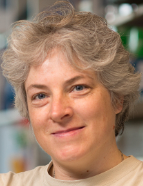Mitochondrial complex I: An intricate energy-converting machine, a cornerstone of mitochondrial metabolism, and a locus of mitochondrial dysfunction and disease
Mitochondrial complex I (NADH:ubiquinone oxidoreductase) powers ATP synthesis by oxidative phosphorylation, exploiting the energy from reduction of ubiquinone by NADH to drive protons across the energy-transducing inner membrane. Being also required to maintain the redox status of the mitochondrial NAD+ pool, to keep the tricarboxylic acid cycle and β-oxidation running, it is a keystone of mitochondrial metabolism and crucial for the survival of human cells. Consequently, mutations in its subunits and assembly factors that impact on its structure, function or biogenesis cause mitochondrial diseases, it is a drug target in diabetes, ischaemia-reperfusion (IR) injury and cancer, and complex I-linked drug toxicity compromises drug discovery programmes.
Understanding the function and dysfunction of complex I requires molecular, cellular, mechanistic and clinical information to be brought together: basic molecular knowledge of the enzyme’s structure, mechanism and assembly is required to underpin biomedical studies of the enzyme in mitochondrial and cellular systems of greater complexity. The Hirst group aims to develop this basic knowledge, and to understand and address the role of complex I in genetically, environmentally and pharmacologically-linked mitochondrial dysfunctions. To do this we combine cryo-electron microscopy (cryoEM) to study the structure of complex I, with biochemical and physical methods to study its function and dysfunction. We study the interactions of the complex with reactive oxygen species, drugs and toxins, and how they affect its catalysis and cellular functions. We study the complex in cultured human cells and mitochondria isolated from mammalian tissues, and use model organisms from mouse to yeast to bacterial species to manipulate it genetically. We therefore aim to discover how complex I works (and doesn’t work), how it is regulated, how it is affected by clinically-identified mutations, drugs and toxins, and to help to elucidate its role in both primary mitochondrial diseases and complex multifactorial disorders.
Biography
Judy Hirst studied chemistry at St. John’s College, Oxford (1990-4) and obtained a D. Phil. in chemistry from Lincoln College, Oxford (1994-7), carrying out research in the group of Fraser Armstrong on mechanisms of electron transport in complex enzymes. Following postdoctoral work at The Scripps Research Institute, La Jolla, California, in the group of David Goodin, supported by a Wellcome Trust Prize International Research Fellowship, she joined the MRC MBU to establish an independent research group to study mitochondrial complex I in 1999. She was appointed Professor of Biological Chemistry (Cambridge University) in 2018, and Director of the MBU in 2020. She has been a Fellow of Corpus Christi College and Director of Studies in chemistry there since 2011. Judy was elected Fellow of the Royal Society (FRS) in 2018 and Fellow of the Academy of Medical Sciences (FMedSci) in 2019. She was awarded a Royal Society of Chemistry Interdisciplinary Prize in 2018 and the Keilin Memorial Lecture and Medal in 2020.
Publications
Selected Publications
Bridges HR, Blaza, JN, Yin Z, Pollak MN & Hirst J (2023)
Structural basis of mammalian respiratory complex I inhibition by medicinal biguanides
Science 379, 351-357.
Jarman OD & Hirst, J (2022)
Membrane-domain mutations in respiratory complex I impede catalysis but do not uncouple proton pumping from ubiquinone reduction
PNAS Nexus 1, pgac276.
Wright JJ, Biner O, Chung I, Burger N, Bridges HR & Hirst, J (2022)
Reverse electron transfer by respiratory complex I catalyzed in a modular proteoliposome system
J Am Chem Soc 144, 6791-6801.
Chung I, Wright JJ, Bridges HR, Ivanov BS, Biner O, Pereira CS, Arantes GM & Hirst, J (2022)
Cryo-EM structures define ubiquinone-10 binding to mitochondrial complex I and conformational transitions accompanying Q-site occupancy
Nature Commun 13, 2758.
Yin Z, Burger N, Kula-Alwar D, Aksentijević D, Bridges HR, Prag HA, Grba DN, Viscomi C, James AM, Mottahedin A, Krieg T, Murphy MP & Hirst, J (2021)
Structural basis for a complex I mutation that blocks pathological ROS production
Nature Commun 12, 707.
Grba DN & Hirst J (2020)
Mitochondrial complex I structure reveals ordered water molecules for catalysis and proton translocation
Nature Struct Mol Biol 27, 892-900.


